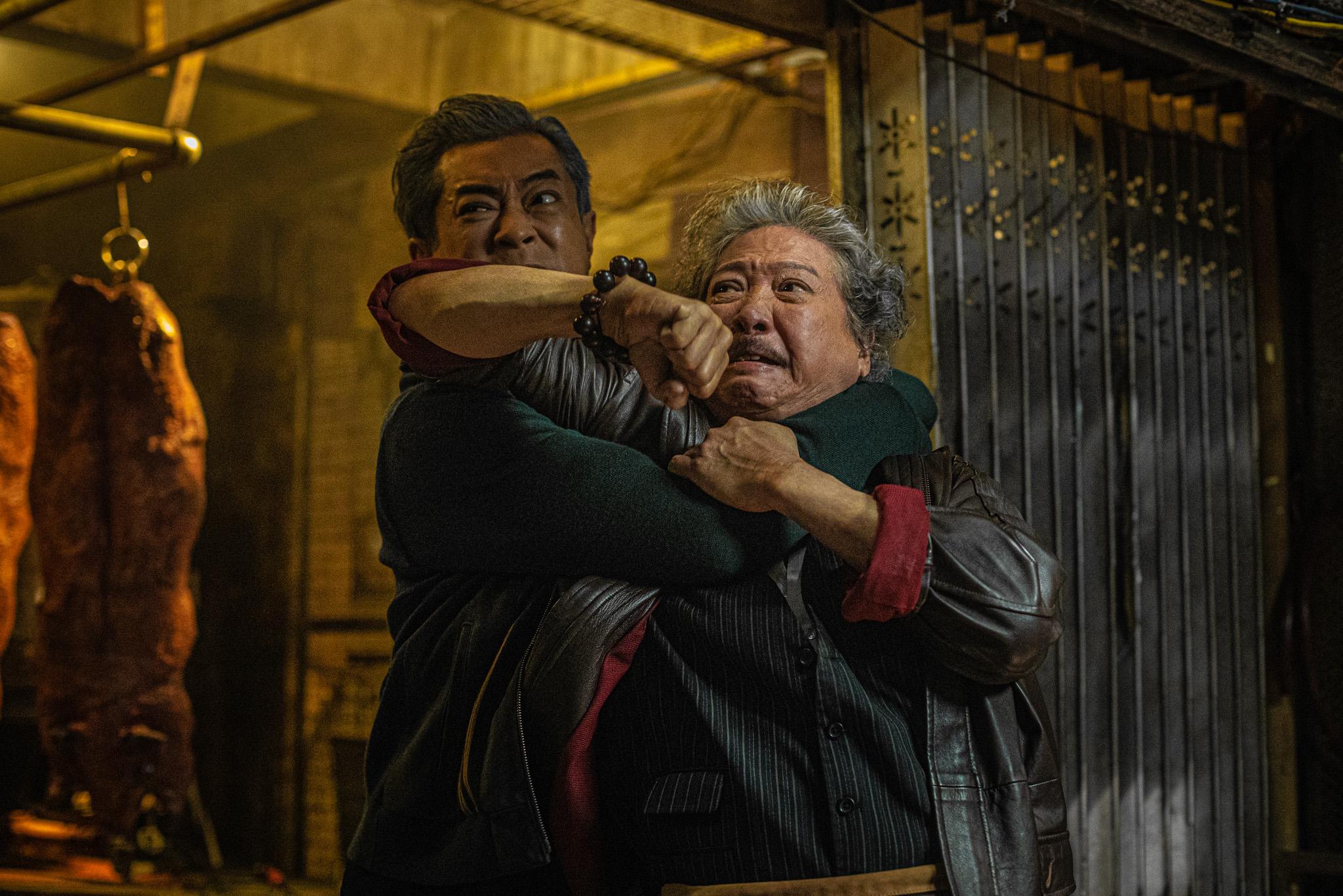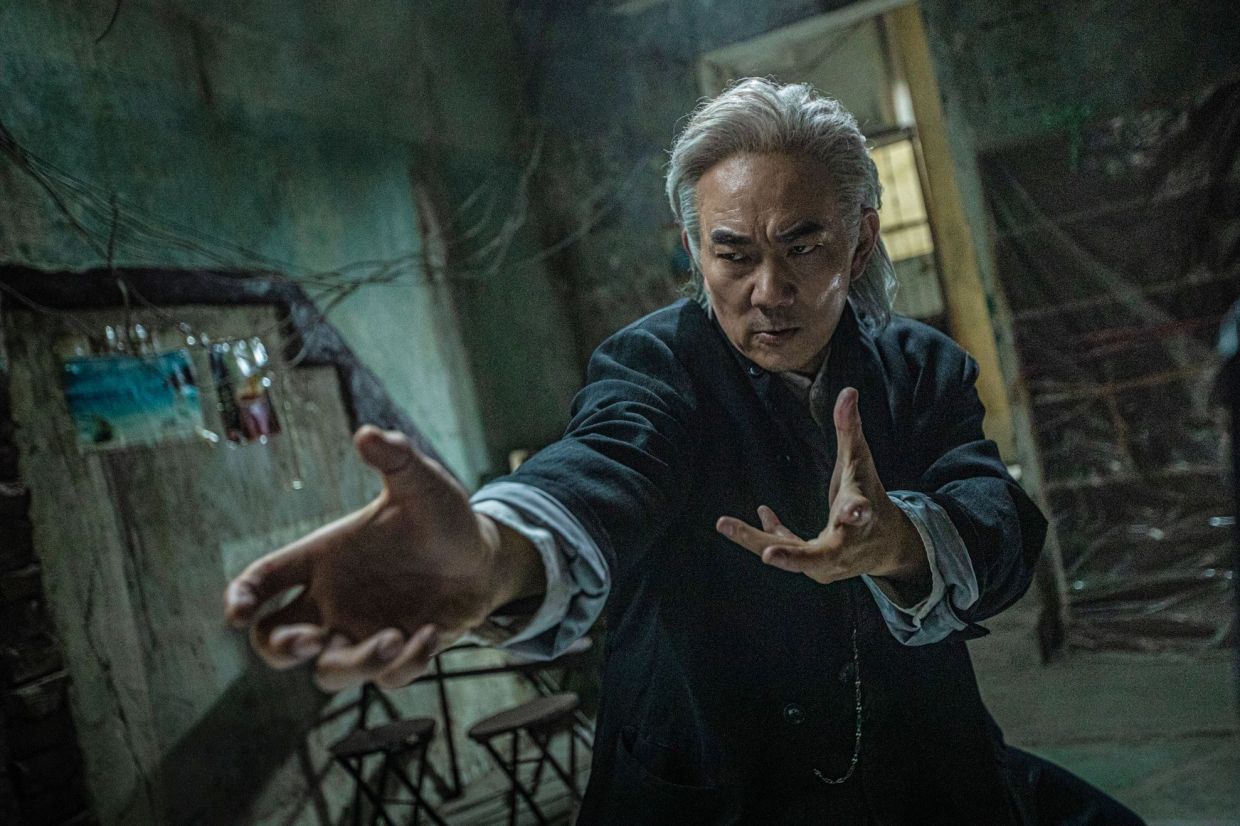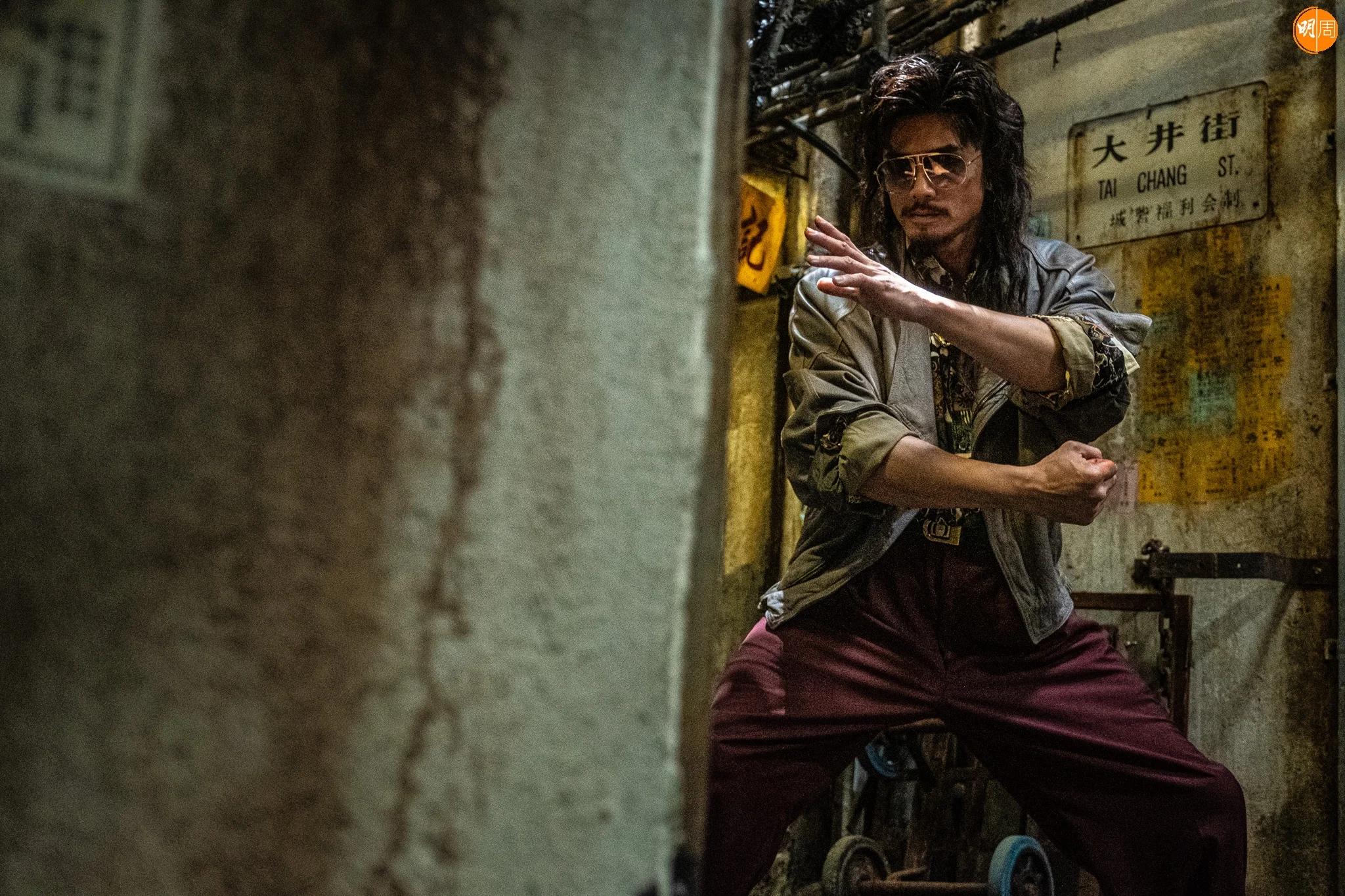Twilight of the Warriors: Walled In – A Blast of Hong Kong Kinetics
Everything we like about Hong Kong action cinema in one cool movie.
 Film Exposure
Film Exposure
Site consacré au cinéma proposant des articles de fond et documentés.
Everything we like about Hong Kong action cinema in one cool movie.
In the 80s, an illegal immigrant in search of a better life becomes the unwilling catalyst of a deadly street war between two powerful gangs. In Kowloon Walled City, the mythical past clashes with the harsh but hopeful present in a whirlwind of questions about identity, corruption, and brotherhood, culminating in spine-breaking, head-spinning, bone-crushing action set pieces. Everything we like about Hong Kong action cinema in one cool movie? Soi Cheang has answered our prayers.
Announced eons ago, with several directors attached over the years, the live-action adaptation of Andy Seto manhua’s City of Darkness finally started production in late 2021, with Wilson Yip producing, action designer extraordinaire Kenji Tanigaki choreographing, and versatile filmmaker Soi Cheang directing. The cast brings together rising action stars such as Phillip Ng and legendary figures such as Sammo Hung and Louis Koo, propelling expectations into the stratosphere.
Expectation may be the root of disappointment in some cases, but not here. Twilight of the Warriors: Walled In delivers across the board, as an action epic of course, but also as a human story. Raymond Lam initially portrays the protagonist Chan Lok-kwun with a certain degree of stoicism that comes from experiencing life solely through hardships. Orphaned, exiled, destitute, and betrayed, Chan enters the walled city as a broken, desperate man in search of peace and stability. In its first half, the film takes its time to focus on the immigrant story and on the role of Hong Kong as a refugee hub with as much gusto as the framework of comic book adaptations allow. The character’s portrayal evolves, through the friends he makes but also through the bones he breaks. In a world where every inch of the environment has been turned into practical, liveable but claustrophobic space, character arcs exist and evolve through the images at least as much as the words – if not more.

Throughout its runtime, the film explores questions of identity (personal, for Chan; communal, for Kowloon), family (what makes a father? What makes a home, and is it worth fighting for?), and politics (the 1984 Sino-British Joint Declaration is mentioned, its shadow hovering above the characters, influencing their decisions). No groundbreaking conclusion is reached, and other films have tackled the same subjects more thoroughly, but Twilight of the Warriors offers an efficient synthesis of what used to make Honk Kong films feel so urgent – the stories of a people struggling to stay the masters of their fate, administratively decided by two foreign forces that knew nothing of the local experience. Chan Lok-kwun’s fate reflects that of Hong Kong’s, as his future seems to hang in the balance between Cyclone’s (Louis Koo’s) mercy and Mr. Big’s (Sammo Hung’s) wrath… that is, until he takes matters into his own hands.
Granted, some characters could have benefitted from a few more minutes of screen presence: the bald, dual-wielding cook deserved it (a standout character named A Qi in the books). Similarly, it would have been nice to spend more time with Chan Lok-kwun’s three main allies, played by Terrence Lau, Tony Wu and German Cheung, though each one is indeed given its defining characteristic from the source material. The older stars, namely Sammo Hung, Louis Koo, and Richie Jen, all strongly contribute to fleshing out the film’s diegesis realistically. Koo is his usual cool and helps bring weight to the history of the place, while Hung seems to be having fun in a deliciously weaselly villain role. Both get to shine kinetically as well, though their scenes are – understandably – the ones with the most obvious camera tricks and stunt/digital doubles, but never so much that it takes the viewer out of the experience. It’s a delight to see Sammo Hung – who was 70 at the time of filming – back in action mode, his charisma unscathed by the passing of time.
In hindsight, certain writing choices can seem superfluous, notably the decision to include a short prologue about the walled city instead of opening directly with the protagonist. While it does pave the way for the important flashbacks that are shown later, it also becomes redundant when characters recount the exact same events orally around the half-way mark. A strange structural choice, uncharacteristic of Cheang’s usual storytelling abilities. On the plus side, the source material is smartly altered in order to streamline the storyline. Some character relationships are also noticeably different and more swiftly communicated, making the whole more digestible and immersive, but never too exposition heavy. Some of the details that are not fully explained in the film are there to work as nods for fans of the manhua (BBQ pork, claw marks on the wall, and so on).
The film also benefits from an original score composed by none other than Kenji Kawai, who wastes no time establishing the mythical dimension of the walled city with an opening tune mixing traditional instruments and heroic melody. The first act chase quickly profits from his propulsive music, combining electric guitar riffs with heavy orchestral accompaniments. The guitar remains a staple of the score throughout, even in the quieter moments, with a use of the scales harkening back to what Wong Kin-wai did in 2016 for Benny Chan’s Call of Heroes. Flashbacks are sometimes adorned with traditional chants, adding to their legendary nature and creating a strong contrast with the events set in the 80s. During action scenes, Kenji Kawai’s score reaches its usual epic heights, with no shortage of martial percussions and rhythmic string ensembles.
As was inferred from the trailer, the production and set designs are absolutely astounding, rivalling Cheang’s own Limbo in their immersive power. Art director Kenneth Mak Kwok-Keung and his team managed to recreate parts of the Kowloon Walled City in all its intricate, dangerous, and nostalgic glory, building entire alleyways, shops, restaurants, and neighbourhood blocks from scratch. Rivers of makeshift cables cover the walls and floors of the dilapidated housing units that form the most densely populated place on Earth. The film also wants to pay homage to the city and its residents, all too briefly showing the bustling life of the place, its solidarity, its love. As has often been the case in Soi Cheang’s films, women play only a small role in the story, which is a shame here, as expanding the subplot involving a little girl and the woman who helps her could have added an extra layer to the film’s emotional stakes. One wonders as well why the character of Lan Nan, the protagonist’s love interest in the books, is completely absent from the film. She could, for instance, have been the one taking care of the little girl without it feeling out of place. However, said stakes are powerful enough as is to carry the story forward and give weight to the numerous action set pieces the film is centred on.

Twilight of the Warriors was never going to be a faithful adaptation of the manhua, which would honestly have been unwatchable. What works on the page would have become unsuitable for the screen, and the filmmaker was right to transform the fantastical world imagined by Andy Seto (in which fighters all seem to possess overtly supernatural strength and stamina) into a more grounded, gritty action film that occasionally bends the rules of realism. Finding the right balance between hard-hitting, believable action and comic-book logic must have been quite the headache, but it feels like Kenji Tanigaki nailed it, offering a crescendo of onscreen kinetics that progressively shift from street realism to heightened genre fare in its finale.
The film’s kinetics are the result of many factors. Decades of Hong Kong action cinema, of course, which are present on the screen through some of the actors, but also in the way the editing plays an essential role in the creation of the scenes’ energy. No one-take shenanigans here, it’s all about creating visual dynamism through the relationship between one shot and the next. Soi Cheang doesn’t always manage to hit the bullseye, but he often does, and the film runs on that energy. Inserts regularly add volume and excitement to the action scenes, allowing for greater audience involvement by focusing on crucial details. The environment also plays a part – perhaps not as much as I would have hoped personally – with the choreographies sometimes taking advantage of the broken ceilings, open walls, and flimsy pipe work.
Kenji Tanigaki brings his own flair to the proceedings as well. The long-time Donnie Yen collaborator has proved himself exceptionally gifted in the way he can adapt to different types of movies (wuxia, sword fighting, urban crime thriller, and so on). Having found the right balance for this adaptation, he evidently set out to offer varied, exciting set pieces that bring out the characters’ various strengths (blades for Tony Wu’s Twelve, raw fists for German Cheung’s AV). The approach becomes the film’s greatest asset in its final act as one specific fighter who started out as a secondary character ends up stealing the show in a breathtaking display of wire-assisted martial feats. CGI are present but not distractingly so, the team having managed to strike a great balance of actual physical stunts, some of which look really painful, and computer-aided imagery when necessary, mostly in wide shots showing wildly impractical stunts (no, they did not actually throw a motorcycle at those two guys – they probably would have in the 80s, but safety has thankfully increased since then).

I may be partial as the style of action speaks precisely to my personal preferences, creating a dialogue with the audience in how it involves us every step of the way, through the framing, the editing, and the choreographies themselves (always designed to suit the performers; something recent action films too often tend to forget). The film never chases the technical show of force, but it impresses plenty by staying consistent in its progression. Soi Cheang’s style of filming is also at a crossroads here, reconnecting with some of the rawness and immediacy of Dog Bite Dog without forgetting what action director Nicky Li taught him on SPL 2: A Time for Consequences in terms of clarity and kinetic storytelling. Don’t expect another SPL 2 however, as the director mostly leaves operatic masterclasses behind in favour of a more grounded mise-en-scène. Shamo was another adaptation (of a manga this time) from Soi Cheang, and hints of that film’s more elliptic visual grammar have found their way back to Walled In, to strong effect. The film contains many action scenes, but the final showdown – an exhilarating, high-stake fight to the death on the rooftops of the walled city – is probably the one that will sear itself into the viewer’s mind.
Produced for a budget of approximately 40 million US dollars, Soi Cheang’s latest brings together all the filmmaker’s strengths to deliver an impressive, heart-pounding action epic that stands out as the ultimate Hong Kong blockbuster. For all its nostalgia-infused relationship with the Kowloon Walled City, Twilight of the Warriors feels more like a new beginning in terms of filmmaking possibilities than the late Benny Chan’s Raging Fire, which felt like a final (explosive!) chapter for the genre. No doubt Soi Cheang has not finished wondering where cinematic action should go next. We’ll gladly follow him wherever his quest takes him.
Twilight of the Warriors: Walled In is smashing into UK and Irish cinemas from 24 May. Thanks to The Warrior Agency and Trinity CineAsia for making this review possible.
Twilight of the Warriors: Walled In – French release on 4 September, no date yet for Switzerland
Directed by Soi Cheang
With Raymond Lam, Sammo Hung, Louis Koo, Phillip Ng
2 commentaires »